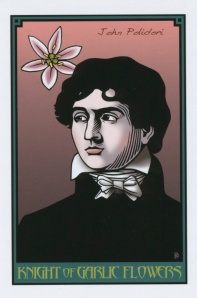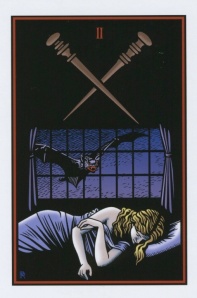It’s been awhile since I’ve done this, written an entry. Mostly it’s my crazy schedule—occasionally I lie awake at night, ponder everything I need to be doing, and conclude, very sensibly, that it’s not physically possible—but I’ve wanted to come back to this, and recently was thinking of what might be a good place to start.
I could write about some really exciting news, a new trip to Greece planned for next May. This will be my third time leading a group of people on a sacred journey. But I thought I would wait until the plans were up and running.
Then there’s the year long Tarot course I’ve been teaching, Becoming A Reader. We’re almost finished with the first two of four sections, and it’s been wonderful. Section Three begins in September, and will be open to newcomers. I’ll write about that too as it gets closer.
And of course there’s all the stuff that pops into my head when I’m walking with Wonder (best dog ever), or writing letters with 100 year old fountain pens, or watching Dr. Who. Dr. Who! Now there’s a subject, the best treatment of immortality I’ve ever seen (among all its other excitements).
But what I decided to share was a Tarot reading I did with Robert Place’s Vampire Tarot. Robert is the creator of one of the great modern decks, The Alchemical Tarot. His new deck is based on Dracula and vampire lore in general. The art is among his best, which is to say the highest level. The Major Arcana, or Trump cards, are characters and scenes from Dracula, the Minor Arcana, or suit cards, are based on the weapons against vampires.
Wands=Stakes
Cups=Holy Water Vessels
Swords=Knives
Pentacles=Garlic Flowers (it’s not the edible bulb of garlic that repels vampires but the flower)
The reading was a standard one for a new deck, but it seemed to me to reach beyond that to make powerful statements about the whole practice of reading cards, that strange activity that has captivated me for so many years.
Here’s the spread:
2. 1. 3.
4.
1. What is the essence of this deck, what is its voice?
2. How does it speak to us?
3. What does it ask of us?
4. What is possible with it?
And here were the cards:
Knight of Garlic Flowers 7 of Knives 2 of Stakes
9 of Stakes

7 of Knives
The voice of the deck—Seven of Knives
The Seven of Knives depicts a vampire (based on the 1920s movie, Nosferatu) coming through an open window. He is sneaking in, and indeed trickiness is quality often associated with the Seven of Swords. As the essence of the deck, it sneaks up on us, but we also have to let it in. Tarot in general is like that, we start doing readings for fun, or curiosity, and it takes us over in some way. Of course, the vampire in this picture is up to no good (“Count Orlock,” he’s called in the movie) but we’re adapting here.

Knight of Garlic Flowers
How does it speak to us—Knight of Garlic Flowers
The Court cards in the Vampire Tarot are based on writers and other figures connected to vampire literature or Bram Stoker, the creator of Dracula. The Knight of Garlic Flowers is John Polidori, who, Bob Place tells us, wrote the first prose vampire story. Thus, as Place says, he moved “from the ethereal realm of poetry to the more concrete realm of prose.” Tarot is a spiritual tradition, a complex intellectual and mystical structure. But in readings a deck speaks to us by addressing concrete issues. The spiritual is not abandoned, not at all. It comes sneaking through the window of the practical questions.

2 of Stakes
What does it ask of us—Two of Stakes
Here we see the character Lucy Westernra from Dracula, asleep as Dracula, in the form of a bat, approaches her window. The window theme is repeated from the Seven of Knives, and the power of the Count will entice Lucy to open the window, to let him in. While she is consciously innocent, there is a quality of desire and risk about her. Place says “This is a card of attraction, hunger, and lust.” So the deck, all decks, ask of us that we come to them with desire, that we open the window and let them bite us.

9 of Stakes
What is possible—Nine of Stakes
Here we see a vampire burning up in the Sun. Place says this comes more from movies and tv shows than vampire literature. He also says that the card represents “a burning away of what is unwanted.” There is a kind of transfiguration implied. A return of that spiritual dimension as the lower levels are consumed. Thus, the cards take the ethereal symbolism and ground it in people’s life issues, but they also transform the ordinary, they raise us up. This is not just a concept, I have seen it in myself and many others, that we start doing readings out of curiosity or excitement, and the cards change us, we become, through surrendering to them, more aligned to the ancient truths that run through all the cards.
Ah Rachel so glad to see you back in cyber space. Your reading has definitely spurred my interest in wanting to get Robert’s Vampire deck.
I think the possibility of the John Polidori character is much more open to possibilities.
His characterization of the The Vampyre is plausibly the histrionic personality of Lord Byron himself. I have even heard that Polidori was in love with the poet and frustrated by him.
Polidori wrote his The Vampyre story around the same impetus that had Mary Shelley write the Promethean classic Frankenstein, a major summer storm in June and a wager to write a good ghost story.
Percy Bysshe Shelley rewrote some Matthew Gregory Lewis tales, and Byron also began to write a fragment of a novel.
It was this fragment that Polidori adapted into his story.
One can say here that Polidori’s creation was a sort of vampiric creation inspired perhaps by unrequited love and resentment.
The garlic flower is perhaps the weakest weapon in the anti-vampire arsenal and may even portend a certain susceptibility to the fanged seducer?
Thanks, Paul. You’re the first to see this resurrection, so i appreciate your observations. Robert’s deck makes me want to read Polidori–among its other strengths.
Wow, I am so glad to see a new post. 🙂 Just today my copy of Tarot Wisdom arrived and I then did a search for “rachel pollack blog”. So glad to find this here. Your book Tarot Wisdom is just the book I have been searching for for a while now. It’s just the something-more I needed. Thanks for writing the book and the blog. 🙂
“So the deck, all decks, ask of us that we come to them with desire, that we open the window and let them bite us.”
I love this! Of course, along with that bite is the empowering embrace that promises the arrival of many magical experiences. I’ve certainly been a willing “victim.” Still am, actually…
The words
“So the deck, all decks, ask of us that we come to them with desire, that we open the window and let them bite us.”
also jumped out at me. Bite me! Bite me!
But I want to emphasize Dr. Who, as well. Thanks to you, Rachel, I am now an ardent addict of the Doctor. At first, I resisted, but I let it bite me and I can no longer close the window – or the door of the Tardis.
Hugs! Helen
thanks, everyone. Yes, the idea of the Tarot biting us seems to really work. Some people use the metaphor of disease–“I’ve go the bug_–but vampire bites are so much more compelling.
Helen, I figure to write my Dr, Who blog sometime soon. I was sort of composing it in my head last night. I’m such a fan. I have a blue car now, and have thought of paying for the license plate to read TARDIS. (For those who don’t know, that’s the name of the Doctor’s magical timespace ship,cleverly disguised as a police telephone booth from the 1950s.)
Thanks a lot for your new post. I like your blog !!!
I am from Spain and I read some of your books and I use them with my pupils.They love them and we talk a lot about the cards and their meanings.
Thanks a lot for your wisdom and for sharing it !!!
Love,
Lili
I was the production editor for the Vampire Tarot. I had issues with the use of vampire killing substances (garlic, holy water) as suits. To me, it seemed to defeat the purpose of the deck.
The art, however, is beautiful.
Hi, Meryl. I see your point, especially if we think of the deck as being not just about vampires but in a sense for vampires. But if it’s about vampire lore then ways of killing them is part of the story.
Actually, I really like the idea of a deck for vampires, from their point of view. it could be developed as an ancient deck that the vampires used to protect them from attack, develop their supernatural powers, etc.
Ahhhh….Rachel….simply put……you’re the best!
I am with you in May. No longer putting off this magical journey. SO ready!
Wonderful, Igraine! I’ll be posting some information about the trip soon, here and on my web site (which in general is sorely in need of updating).
Oh what a beautiful card, the one with my husband. John Polidori will forever be “The Vampyre” and Edward Cullen is not even close. After all, he’s not real, but JP was x